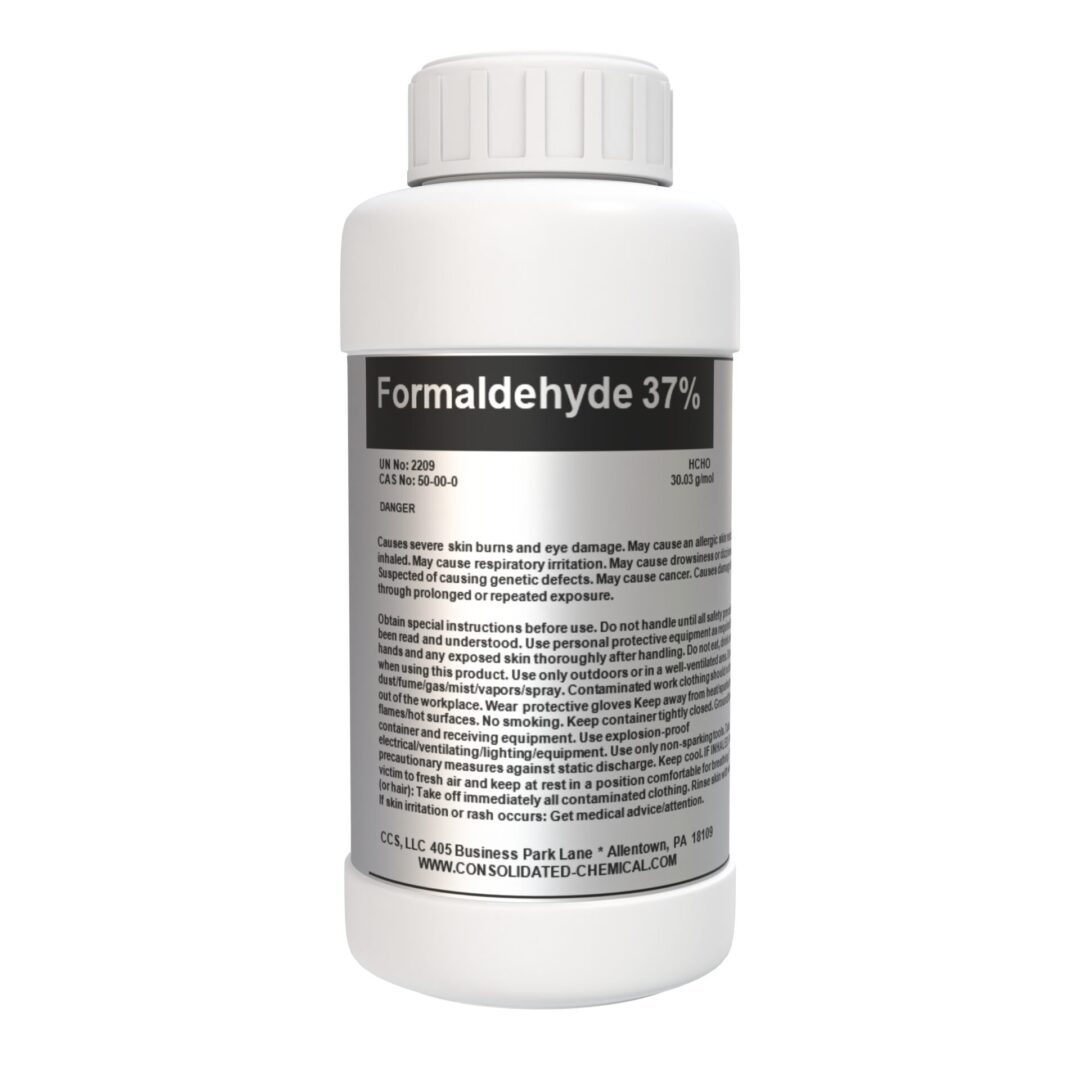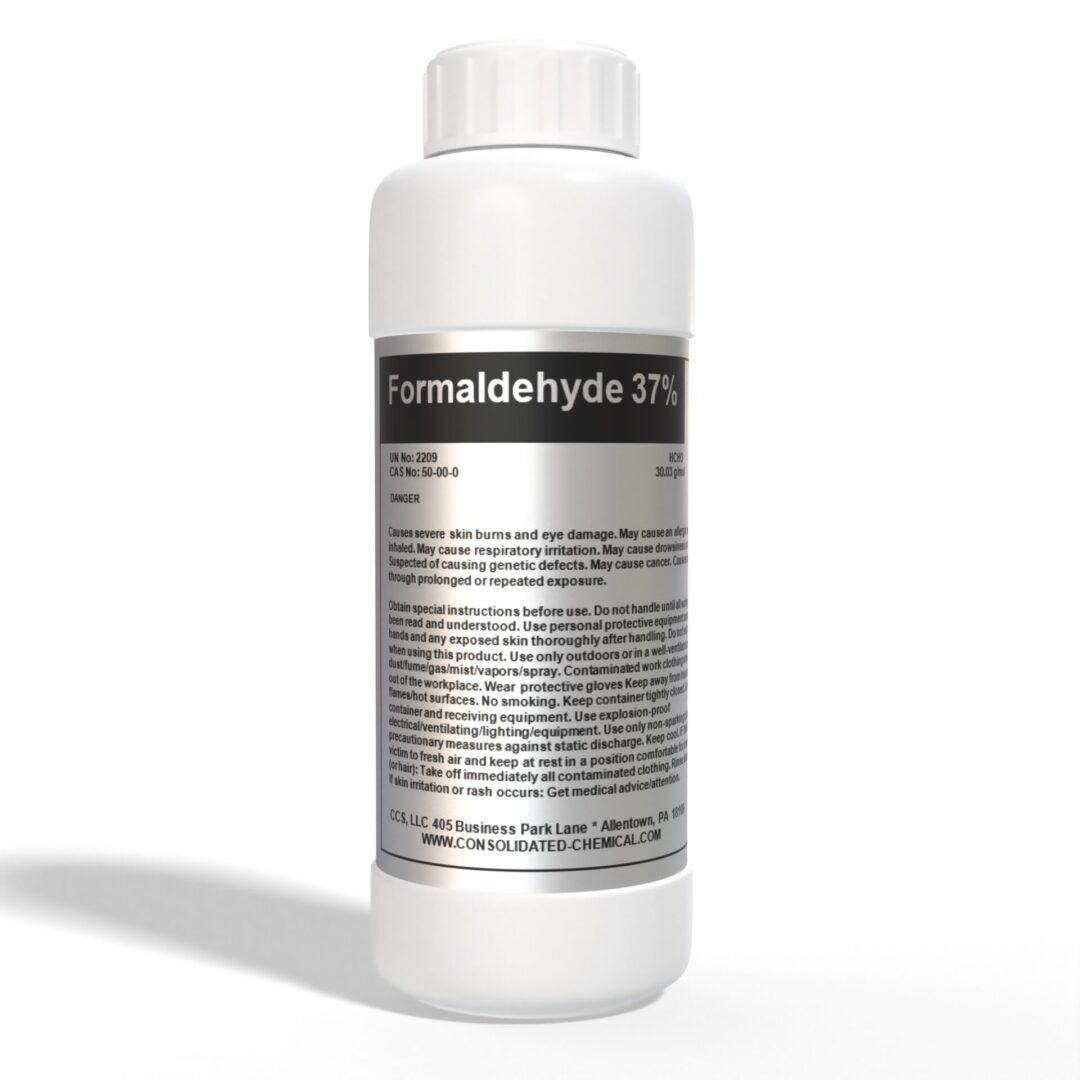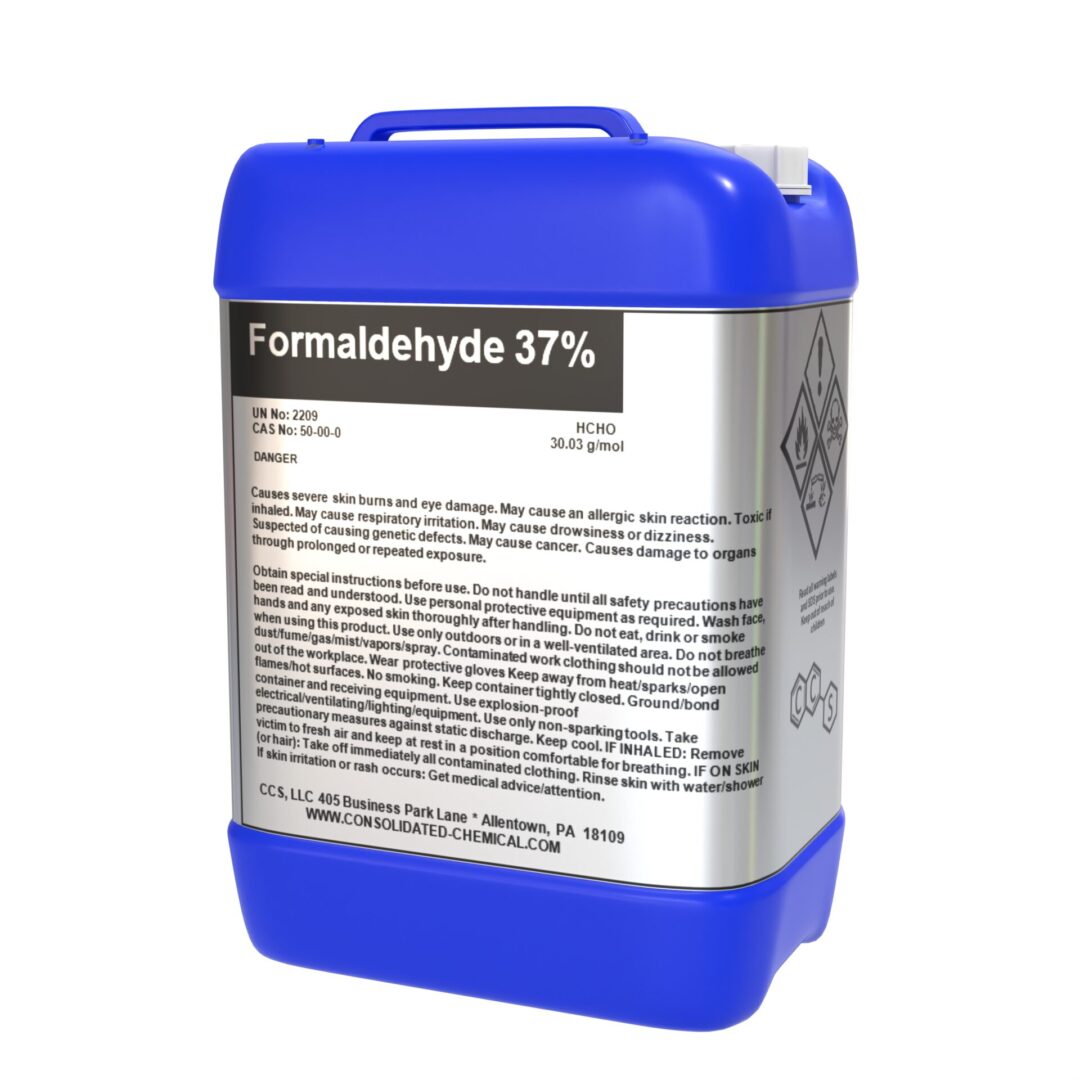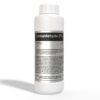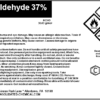Formaldehyde 37% Solution (Methanal) – Lab Grade
$23.99 – $320.00
Technical Specifications for Formaldehyde 37% Solution
- Chemical Name: Formaldehyde Solution, 37%
- CAS Number: 50-00-0
- Molecular Formula: CH₂O
- Molecular Weight: 30.03 g/mol
- Appearance: Clear, colorless liquid
- Odor: Pungent, characteristic odor
- Concentration: 37% w/w (by weight) in water
- Methanol Content: Typically 6-15% (used as a stabilizer to prevent polymerization)
- Boiling Point: Approximately 96°C (204.8°F) (solution)
- Density: 1.08 g/cm³ at 20°C
- Flash Point: 60°C (140°F) (closed cup)
- Solubility: Miscible with water, alcohol, and other polar solvents
Chemical Properties:
- Stability: Stabilized with methanol to prevent the formation of solid paraformaldehyde.
- Reactivity: Highly reactive aldehyde, known for its preservative, disinfectant, and fixative properties.
- pH: Slightly acidic, depending on the methanol content and dilution level.
Description
Formaldehyde 37% Solution, also known as Methanal, is a versatile and highly effective chemical solution used widely in industrial, laboratory, and commercial applications. This aqueous solution is stabilized with methanol to ensure long-term stability and prevent polymerization.
Applications for Formaldehyde 37% Solution (Methanal)
- Chemical Synthesis:
- Used as a key precursor in the synthesis of resins, such as urea-formaldehyde and phenol-formaldehyde.
- Essential in the production of pentaerythritol, hexamine, and other industrial chemicals.
- Laboratory Use:
- Commonly used as a fixative and preservative in biological and medical laboratories.
- Serves as a disinfectant and sterilizing agent in laboratory settings.
- Textile Industry:
- Utilized in fabric finishing to improve wrinkle resistance and shrinkage control.
- Aids in dye fixation during textile processing.
- Construction and Woodworking:
- Used in the production of adhesives for plywood, particleboard, and other engineered wood products.
- Enhances strength and durability in construction materials.
- Medical Applications:
- Incorporated in embalming fluids for tissue preservation.
- Used in histology and pathology for specimen preparation.
- Agriculture:
- Acts as a disinfectant in poultry farming and other agricultural practices.
- Used in the preparation of certain pesticides and fertilizers.
- Cleaning and Sanitation:
- Found in industrial and household cleaning formulations for its antimicrobial properties.
- Used in the production of detergents and sanitizers.
- Cosmetics and Personal Care:
- Occasionally used in controlled concentrations as a preservative in cosmetic products.
- Pharmaceuticals:
- Plays a role in vaccine production as a sterilizing agent.
- Used in the synthesis of various pharmaceutical intermediates.
- Miscellaneous Applications:
- Employed in leather tanning processes.
- Used in photographic processing chemicals.
Storage:
- Temperature: Store in a cool, dry, and well-ventilated area. Optimal storage temperature is 15–30°C (59–86°F) to prevent polymerization or degradation.
- Containers:
- Store in tightly sealed, corrosion-resistant containers (e.g., HDPE or stainless steel).
- Avoid metal containers prone to corrosion.
- Location:
- Keep away from direct sunlight, heat sources, and open flames.
- Store separately from strong acids, bases, and oxidizing agents.
- Ensure storage in a designated area with secondary containment to prevent spills.
-
Labeling: Ensure containers are properly labeled with hazard warnings and handling instructions.
Handling:
- Personal Protective Equipment (PPE):
- Eye Protection: Use chemical splash goggles or a face shield.
- Skin Protection: Wear chemical-resistant gloves (e.g., nitrile or neoprene) and protective clothing.
- Respiratory Protection: Use a respirator approved for formaldehyde vapors in poorly ventilated areas.
- Ventilation: Work in a well-ventilated area or under a chemical fume hood to minimize exposure to vapors.
- Safe Practices:
- Avoid inhalation of vapors or mists and prevent contact with skin, eyes, and clothing.
- Do not eat, drink, or smoke in areas where formaldehyde is handled.
- Use non-sparking tools and equipment to minimize ignition risks.
Additional information
| Size | 100mL (3.3 Fl Oz), 500mL (16 Fl Oz), 1000mL (32 Fl Oz), 1 Gallon (128 Fl Oz), 5 Gallon (640 Fl Oz) |
|---|
Related products
-
Methylene Blue Stain/Dye High Purity, Poly Bottle, 10g-50g
$12.50 – $34.00 Select options This product has multiple variants. The options may be chosen on the product page -
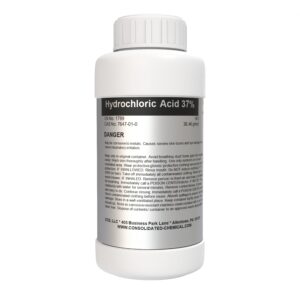
Hydrochloric Acid 37% Premium ACS Reagent Grade
Rated 3.00 out of 5$14.99 – $57.00 Select options This product has multiple variants. The options may be chosen on the product page -

Monopotassium Phosphate (MKP) – Food Grade
$18.00 – $24.99 Select options This product has multiple variants. The options may be chosen on the product page -

Methyl Alcohol (Methanol) – Premium Multi-Purpose Solvent
$12.99 – $70.00 Select options This product has multiple variants. The options may be chosen on the product page
SKU: N/A
Categories: Fertizlizer Additive, Industrial Chemical
Tags: 37%, 37% Formaldehyde, Biological Fixative, Chemical Intermediate, Disinfectant, embalming, Embalming Solution, Fixative Solution, Formaldehyde, Formaldehyde 37% Solution, formaldehyde Alibaba, formaldehyde alternative uses, formaldehyde Amazon, formaldehyde analytical reagent, formaldehyde antibacterial, formaldehyde antifungal, formaldehyde antimicrobial, formaldehyde aqueous solution, formaldehyde B2B marketplace, formaldehyde biodegradable, formaldehyde boiling point, formaldehyde bulk, Formaldehyde Bulk Supplier, Formaldehyde CAS [Insert CAS Number], Formaldehyde Chemical, formaldehyde chemical properties, formaldehyde chemical synthesis, formaldehyde controlled-release applications, formaldehyde demand, formaldehyde density, formaldehyde disinfectant, formaldehyde distributor, formaldehyde e-commerce, formaldehyde eBay, formaldehyde eco-friendly, formaldehyde extended stability, Formaldehyde Fixative, formaldehyde flash point, formaldehyde food additive, formaldehyde food-grade, Formaldehyde for Adhesives, Formaldehyde for Chemical Synthesis, Formaldehyde for Cleaning Agents, Formaldehyde for Coatings, Formaldehyde for Disinfection, Formaldehyde for Embalming, Formaldehyde for Histology, Formaldehyde for Laboratory Use, Formaldehyde for Pathology, Formaldehyde for Pharmaceuticals, Formaldehyde for Resins, Formaldehyde for Textile Processing, Formaldehyde for Tissue Preservation, Formaldehyde for Water Treatment, formaldehyde GHS classification, formaldehyde global market, formaldehyde handling, formaldehyde high-performance chemical, formaldehyde high-purity, formaldehyde import export, formaldehyde in adhesives, formaldehyde in agriculture, formaldehyde in animal feed, formaldehyde in aquaculture, formaldehyde in biology labs, formaldehyde in biomedical applications, formaldehyde in chemical fixatives, formaldehyde in chemical synthesis, formaldehyde in coatings, formaldehyde in composite wood, formaldehyde in construction materials, formaldehyde in cosmetics, formaldehyde in creams, formaldehyde in deodorants, formaldehyde in DNA research, formaldehyde in drug formulations, formaldehyde in embalming fluid, formaldehyde in environmental applications, formaldehyde in fertilizers, formaldehyde in flavoring agents, formaldehyde in food preservation, formaldehyde in formaldehyde-based disinfectants, formaldehyde in fumigation, formaldehyde in gas sterilization, formaldehyde in hair products, formaldehyde in herbicides, formaldehyde in histological stains, formaldehyde in histology, formaldehyde in industrial cleaning, formaldehyde in insulation, formaldehyde in leather tanning, formaldehyde in livestock treatments, formaldehyde in lotions, formaldehyde in medical laboratories, formaldehyde in melamine-formaldehyde resins, formaldehyde in microscopy, formaldehyde in nail hardeners, formaldehyde in nail polish, formaldehyde in organic synthesis, formaldehyde in paints, formaldehyde in particleboard, formaldehyde in pathology, formaldehyde in perfume manufacturing, formaldehyde in personal care, formaldehyde in pesticides, formaldehyde in pharmaceutical applications, formaldehyde in pharmaceutical intermediates, formaldehyde in phenol-formaldehyde resins, formaldehyde in plastics, formaldehyde in plywood, formaldehyde in polymerization, formaldehyde in resin production, formaldehyde in sealants, formaldehyde in shampoos, formaldehyde in skincare, formaldehyde in textile processing, formaldehyde in tissue preservation, formaldehyde in urea-formaldehyde resins, formaldehyde in vaccine production, formaldehyde in wastewater treatment, formaldehyde in water treatment, formaldehyde industrial applications, formaldehyde industrial sales, formaldehyde industrial supply, formaldehyde industrial-grade, formaldehyde industry trends, formaldehyde IUPAC name, formaldehyde lab reagent, formaldehyde laboratory-grade, formaldehyde long shelf life, formaldehyde manufacturer, formaldehyde market growth, formaldehyde melting point, formaldehyde methanal, formaldehyde molecular formula, formaldehyde molecular weight, formaldehyde MSDS, formaldehyde oxidation resistance, Formaldehyde Preservative, formaldehyde price, formaldehyde procurement, formaldehyde quality assurance, formaldehyde REACH compliance, formaldehyde reactivity, formaldehyde refractive index, formaldehyde safety data, formaldehyde SDS, formaldehyde solubility, Formaldehyde Solution, formaldehyde solution CAS 50-00-0, formaldehyde sourcing, formaldehyde stability, formaldehyde sterilizing agent, formaldehyde storage, formaldehyde supplier, formaldehyde sustainable chemistry, formaldehyde synonyms, formaldehyde technical specifications, formaldehyde trade, formaldehyde transportation, formaldehyde Walmart, formaldehyde wholesale, formaldehyde worldwide shipping, Formalin, formalin 37%, High-Purity Formaldehyde, Histology Reagent, Industrial Chemical, Industrial Formaldehyde Solution, Lab Grade Formaldehyde, Lab Reagent, Leather Tanning, Methanal 37% Solution, methanal solution, Methanol-Stabilized Formaldehyde, Organic Synthesis, preservation, Preservative, Resin Production, Sterilizing Agent, Textile Treatment, Tissue Preservation


